Learn All About the Kitchen Sink
Brief History of Kitchen Sinks 1900 – 1980
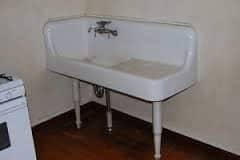
After the turn of the century and prior to 1950 most kitchen sinks were standalone enameled cast iron. They often included a drain board like the sink above.
Between 1950 and 1980 nearly all kitchen sinks became top mounted. This is because most countertops during that period were made using plywood or particleboard. Both materials are easily damaged by water. Laminates like Formica were glued to particle board. Tile and stainless-steel tops were glued to plywood.
Top mounted or “drop-in” sinks were caulked in place to prevent water damage to the wood product below the countertop surface. Top mounted sinks during this period were usually stainless steel but could also be cast iron and steel enameled sinks. See the two drop-in sink examples below:
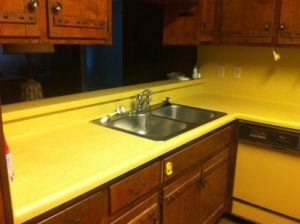
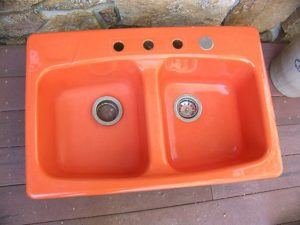
The invention of Dupont Corian in 1967 began the popularity of solid surface countertops. This made more sink types and surfaces possible.
Today there are more than a dozen common solid surface countertop materials and a similar number of choices for your kitchen sink.
The most common types of kitchen sinks are drop-in, undermount, and farm sinks. Sinks can be single bowls, true double bowls a combination of a large and a small bowl. Common materials for sinks include Stainless steel, copper, cast iron, fireclay, soapstone, composite granite and quartz, Swanstone, and acrylics like Corian. There are some advantages and disadvantages to these different sinks that should be considered when you embark on a kitchen renovation or build a new home.
Single Bowl, Double Bowl, or Bowl and a Half Sink?
Most kitchen designers agree that a true double bowl sink is the least practical of the three choices. Both double bowl sink bowls are smaller than a standard small single sink so while you do have two bowls neither will be comfortable using to clean large pots or trays. If you need two sinks the sensible choice is to make sure at least one bowl is 21 1/4″ wide. The smaller of the two sinks is usually reserved for the garbage disposal. This leave the disposal available if you have dishes in your primary bowl.
Large single bowl sinks are more popular today than multi bowl sinks.
This is because nearly everyone in the US has a dishwasher. Contrary to what many people believe, modern dishwashers use far less water than washing dishes by hand and also use very little electricity especially if you don’t use the drying cycle. So having an extra-large sink to scrub the large pots and pans that your dishwasher can’t get clean makes sense.
Drop-In, Under Mount, Integrated, or Farm Style Kitchen Sink?
Drop-in sinks only make sense if you have a laminate or tile countertop. Since Main Line Kitchen Design hasn’t had a customer select either type top in 5 years we will not go into drop-in sinks in detail. Solid surface countertops such as stone, man-made stone, acrylic, or concrete all use either an under-mount sink, and integrated sink or a farm sink. These type of kitchen sinks have no lip and so you can wipe spills right into your sink. Under mount sinks can be enameled, acrylic or metal.
The most common under mount sink by far is a stainless steel under mount.
These sinks will wear the best and require no maintenance. If you are choosing a stainless under mount sink a 16 gauge sink is the best choice. 16 gauge is thicker than the more common 18 gauge, never use any gauge higher than 18.
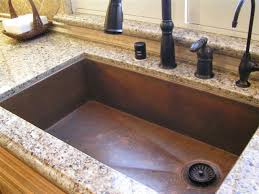
For color and style reasons enameled and acrylic under mount sinks can be attractive.
With acrylic sinks like Corian, be careful not to pour boiling water into a sink with ice in it. The temperature change can crack your sink. With enameled kitchen sinks avoid cast iron pans as they can scratch and chip your sink.
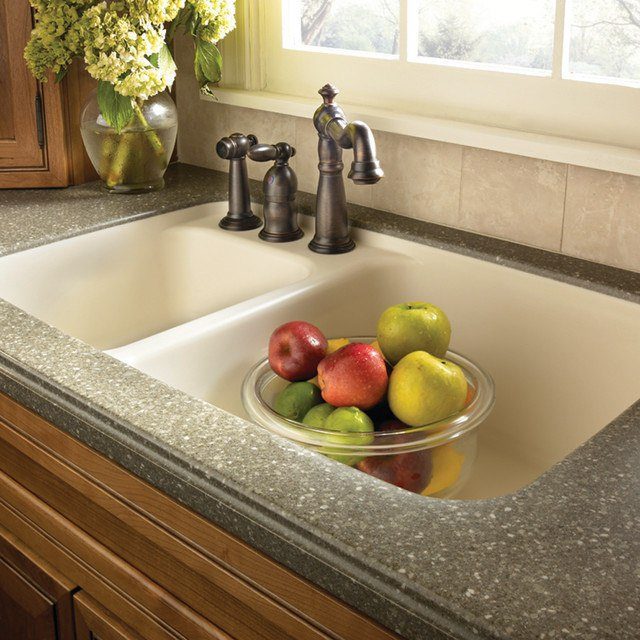
Integrated sinks are acrylic sinks built right into an acrylic top, so there are no seams to collect grime.
Just like with the sink, the top itself will have no visible seams, although the sinks need to be a solid color while the tops can be any pattern. Corian is the most popular acrylic but there are a countless number of other brands. The difference between acrylics is simply the colors available. Be careful using wavy patterns like Corian’s Camel as this will make seams quite noticeable when the pattern changes turning a corner and so defeats one of the advantages of the acrylics.
Be careful using composite kitchen sinks like Blanco’s “Granite” sinks.
These sinks have failed in the past and have no warranty that they won’t turn grey as many did 10 years ago. If you want a composite type sink, a Quartz sink is the better choice as the resin used to fabricate the sink is less likely to have issues. The advantage of these type sinks is their unique shape.
Farm Sinks
Farm sinks also called apron sinks have become very popular and can be quite beautiful. There are some disadvantages to farm sinks that need to be considered. One common issue is that water tends to drip down the front of an apron sink and can ruin the finish on the top of the cabinet doors below the apron. Painted cabinet finishes are especially susceptible to water damage so wipe up drips immediately.
Farm sinks are difficult for some contractors to install.
All farm sinks are custom installed on site and require your contractor to build a cradle inside the sink cabinet to support the sink, and to cut the sink cabinet to size. In some less expensive cabinet lines the sink cabinet needs to be built from parts. Make sure your contractor is aware of his responsibilities and is capable of installing a farm sink.
Enameled apron sinks can be cast iron or fire clay sinks.
Enameled cast iron kitchen sinks like Kohler allow the contractor’s cuts to be hidden by the sinks apron, so their installation is easier. Fire clay farm sinks must be perfectly cut “scribed” into the sink cabinet. Fire clay although very durable can crack in an accident and unlike a chip in an enameled cast iron farm sink, a crack in a fire clay sink cannot be repaired. Replacing the sink can cost several thousand dollars because the sink is built under the countertop. Never use cast iron pans or bring heavy tools close to a fire clay farm sink.
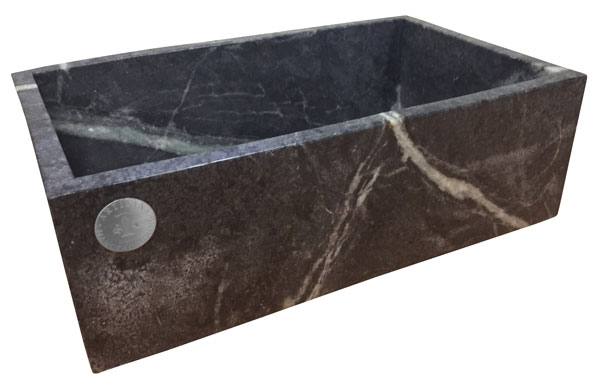
Soapstone farm sinks and stainless-steel farm sinks are the most durable.
Be aware that soapstone custom farm sinks made from slabs will not drain like a normal sloped sink so you might want a one-piece soapstone sink carved from a block. Bucks County Soapstone was the first fabricator to carry these sinks in our area but they are now available at other countertop locations.
Shopping for a sink can be more involved than most customers are prepared for. Ask your kitchen designer about the right sink choice for your kitchen.
Looking for design tips? Read this blog:
Kitchen Design Tips Only the Pros Know!
Have a wonderful summer and of course…
Bon Appetit!
Paul

4 Replies to “Kitchen Sinks and What You Need to Know About Them.”
Maritza
Hi Paul, thank you for this very informative article. We purchased a home with what I believe is an integrated acrylic sink. The counters are still fine but the sink is dirty and possibly stained. We are having a hard time making it look clean. Is there something that you can recommend to clean it or can it be refinished somehow? Thanks for your time.
pmcalary[ Post Author ]
Hi Maritiza,
Acrylic sinks can easily be sanded to refresh them because they are solid all the way through. I would sand it initially with 200 or 300 grit sandpaper until all the stains and scratches are removed. Then you must sand with 600 grit sandpaper (a green scrubby) completely until the whole sink is finished with this final sanding. This is how the whole tops and sinks are finished by the fabricators.
Paul McAlary
Hi Dara,
Yes with a butcher block sink a top mount would also make sense. However any sink in a butcher block top is asking for trouble. Water and wood are not a good combination over time.
Dara
I saw that you mentioned that drop-in sinks only make sense for laminate or tile countertops. What about for butcher block countertops? I would much prefer an undermount sink, but have been told that with a butcher block counter I will void any warranty if it isn’t a top mount. Your thoughts?